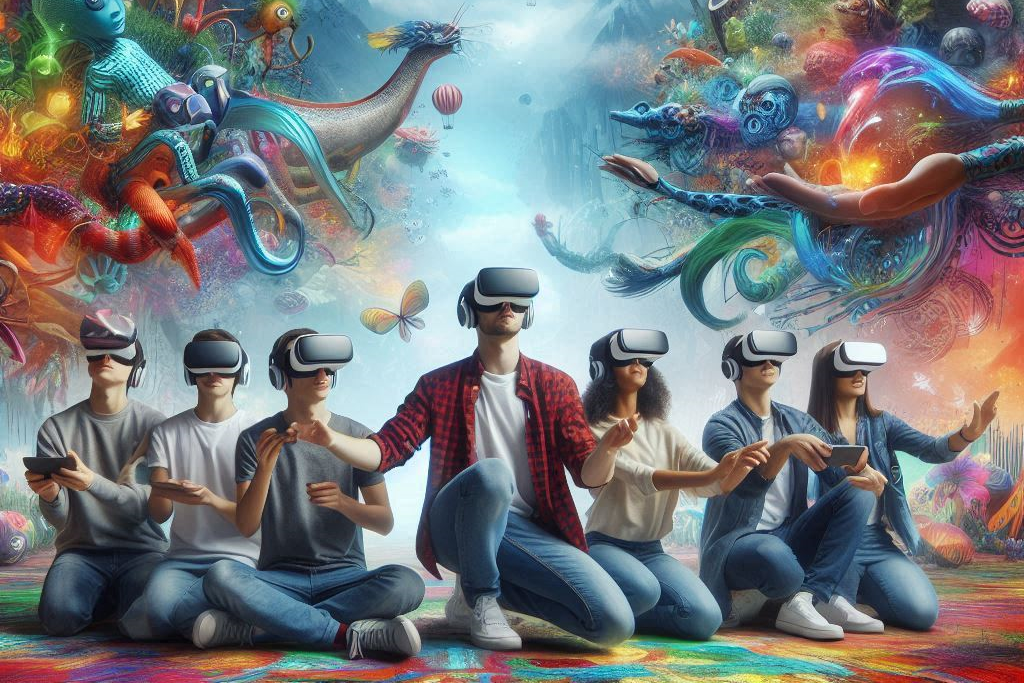Immersion, you know, is the most important thing when it comes to making a player keep playing a video game. It is what makes players feel as if they are part of another world, rather than just as observers without any say in the matter. New technology has been giving game developers the power to create better narratives. Out of these tools, procedural storytelling has emerged as a new way to redefine story-telling in games. It is really cool to know that this technique allows to design truly engaging, immersive and emergent experiences that are based on the players’ actions, preferences, and choices. It can be concluded that procedural storytelling should be the necessary technique in creating the VR games of dreams.
At the heart of procedural storytelling empathizes the development of algorithms and systems to create story elements in a non-linear and dynamic narrative. When comparing regular storytelling to procedural storytelling, one can notice that traditional narratives have static plots regardless of the fact that they are essentially a prescriptive sequence of events. This method is the latest technology; it is more of a change of perspective. Players not only control the story but also co-author the story together with the game developers. This is a natural traffic way ahead for the game industry, which upholds stories that resound with each player.
Procedural storytelling is one of the most important features of the game that allows the player to determine the outcome of the story. The players are more immersed when they are the ones to make the decisions that influence the game world. Just picture going through an open world that seems never-ending where your every selection determines a certain scenario in different ways, everything right from the alliances you make and the battles you take part in are deciding the sequence of events. This feeling of agency turns passive consumption into active engagement, making the players more involved in the narrative. For a game design company, procedural storytelling is a game-changer when it comes to integrating it into products that are easy to resonate with diverse target groups.
Games such as The Elder Scrolls V: Skyrim and No Man’s Sky are the ultimate examples of the influence of procedural storytelling. In a game like Skyrim, players will be embarking on an adventure where everything gets shaped by their own decisions, skills, and interactions. The game’s radiant quest system makes one of the many courses played before the same, players encounter completely new stories with each playthrough. Similarly, No Man’s Sky uses procedural generation to create an infinite universe of planets, each with its own ecosystem and mysteries. These games show the audience that the power of procedural storytelling is to practically bring the player into command of the world.
Clearly, procedural storytelling from a developmental point of view is the fine line between technical excellence and creative vision. To write algorithms that could generatively create such meaningful and coherent narratives are indeed tricky but regulation is possible. Developers must be on the lookout for things like character development, progress, and emotional effect, therefore, in order to generate the diverse content, they want to align their particular themes. The collaboration of programmers, writers, and designers is where the work lies. If a game-maker with a background in procedural systems is hired, the companies can come up with an interpretation that the technology and the narrative should be combined, thus creating a game that will grab the players’ attention.
3D animation services are similarly as crucial in the world of procedural storytelling as the treatment of both the artist and the medium. Specifically, 3D animations being a part of visual storytelling, are a critical aid to immerse players into procedurally generated worlds. The City is lively, with lifelike character animations, facial expressions, and body language that look very visual and realistic. Let me think of a situation for you, where a procedurally generated character goes deep into a monologue with a lot of facial and body expressions. Such emotional moments might not be conveyed properly without 3D animation of high quality which is the essence of the problem. So, for the game developers who have chosen procedural storytelling, the pricing of top-class animation services is a must-have part of the budget.
Procedural storytelling is also a great way to add replay value to games, thus improving their longevity and player loyalty. Although traditional narrative arcs may be very engaging and deeply structured with moments that the player cherishes, eventually, the story has been overused. Procedural systems, in contrast, guarantee that there is something new in every playthrough. The players return to the game driven by the idea of trying out new choices and strategies to see how they can change the course of the narrative. This player-driven replayability, on one hand enhances the video game playing experience and, on the other hand, can help game studios to have a competitive edge in a saturated market.
Nevertheless, procedural storytelling comes with some challenges, including the following one. A common report is that sometimes procedurally generated narratives are not as deep and polished as handcrafted ones as they can be emotionally shallow at times. The real challenge is the conflict between the randomness and the coherence of the plot. The participants want the variety of the events as well as connections and arcs that evoke their feelings. To get past this pitfall is to use a blend between the procedural systems with human creativity. Developers have also started using hybrid models in which procedurally generated content constitutes the engrossing backbone while pre-written story elements supply the necessary coherence and structure.
For smaller development operations among indie developers who rely on procedural storytelling, competing with greater companies might seem quite difficult. Handcrafting splendid textures, characters, and level designs for open-world games may be an expensive process, yet generating new pieces with the use of procedural systems can be a valuable alternative for smaller teams. By the way, utilizing procedural storytelling along with a well-known game design company, solo developers thereof can materialize ambitious projects that can compare with major movies. This way of storytelling can also lead to a shift in creativity and a broad area for creative expansion in the gaming world which can be seen as new possibilities in the industry.
The feeling of the player in the game world as well as the only significant factor molded by procedural storytelling is conveyed in the game. In many cases where a player’s actions reflect the evolving narrative of the game, players just like as if they were inside the story, feel like they are really a part of it. The involvement of these people makes the are of game more immersive as they feel the desire to stay in the game. For instance, if a procedurally generated side quest is successfully completed where a player saves a village from ruin, the added bonus is that the game remembers this accomplishment and brings it up in future dialogs. And that feeling of a living, breathing world a player’s actions matter is improved through the painstaking work of the developers in realizing each detail.
Besides the immersion, the use of procedural storytelling can be the change maker for inclusivity. The idea that narratives can modify themselves according to every different player can be the developers` best ally in adjusting to the multitude of tastes and styles in the audience. Be it an action-seeking, emotionally character-driven, or the meticulously constructed world-building game, the systems of procedures can churn out content matching precisely the taste of the gamer. On the top of this, as this trend can be found in a variety of genres, the gaming sector would not only gain from a more diverse user base but would also be able to create a space where no player would perceive themselves as a minority. A company utilizing procedural storytelling as a means of being inclusive can profit from a broader audience interaction which will further lead to customer loyalty and success.
When we look forward to the future, the ability of procedural storytelling to reinvent the genre knows no bounds. The advancements in artificial intelligence and machine learning, as well as the ever more advanced AI, are going to create narratives that are more sophisticated and emotional than human-written ones. Picture it, a world of an NPC character that would remember your multiple playthroughs, or could be a world whose storylines would be corresponding with the state of the globe. Further down the road of technology, the difference between the authorial and the procedurally generated narratives will fade, and this way, players will have more profound connection and entertainment.
The success of a procedural storytelling project is the result of a dynamic collaboration between technology and artistry. A project aiming at the creation of truly reasonable and easy to enjoy games by using computer-assisted AI and algorithms must not leave out real people. Those experts Dave joins should include specialists in procedural systems, 3D animation service, and narrative design. When the studios hire game developer who is skilled in these areas, they get the chance to open the potential of procedural storytelling and make games that people would enjoy, and therefore, they would be popular in the market as well.
In short, procedural storytelling is among the gaming industry’s most transformative forces. The storyline that the players themselves influence and thus it makes storytelling in video games even more immersive, emotional, and attractive. Although there are still some difficulties, the progress of technology and the novel methods of creation are going to bring us the day, when procedural storytelling will be inseparable from game design. For the gamers it will mean games that are more customized and richer, and for the developers, the tool will be even more efficient regarding pushing to the limits of storytelling and creating worlds of such complexity and diversity, that they will be as alive and dynamic as the players within them.









